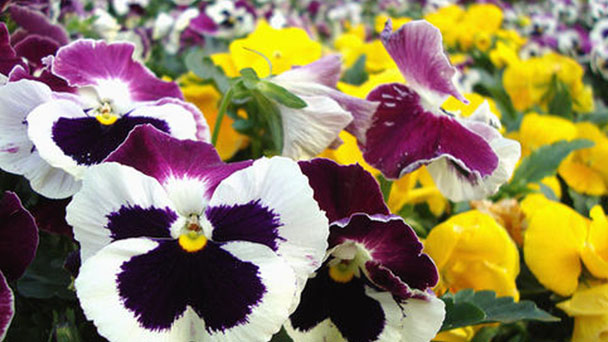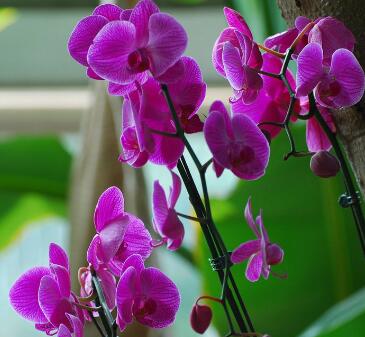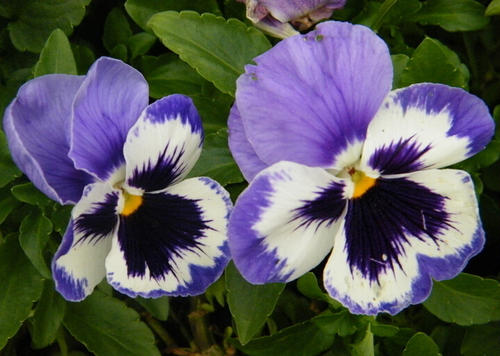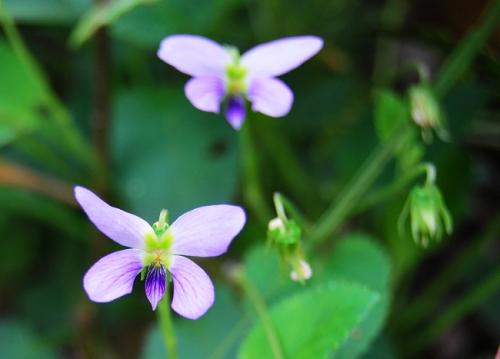Butterfly flower profile
Written by Maggie
Dec 22 2020

Butterfly flower, also known as Iris japonica, is a native of China and Japan. It is a species in the genus Iris, in the subgenus Limniris and within the Lophiris section. It is a rhizomatous perennial plant, with pale blue, lavender or white flowers with an orange or yellow crest. It is cultivated as an ornamental plant in temperate regions. Butterfly flower is a Chinese folk herb, used to clear heat and detoxify, eliminate blood stasis and chase water, and treat children with fever, pulmonary disease, cough blood, sore throat and bruised blood stasis.
Butterfly flowers picture

Morphological characteristics of Butterfly flowers
Butterfly flowers are perennial herbs. Rhizomes can be divided into thick erect rhizomes and slender transverse rhizomes. Erect rhizomes are oblate, with many shorter internodes, brown, long internodes of transverse hate stems are yellow-white; Fibrous roots arising from nodes of rhizomes, much branched. Leaves are basal, dark green, lustrous, reddish purple near ground, sword-shaped, 25-60 cm long and 1.5-3 cm wide, apically acuminate, without distinct midvein.
Stems are erect, higher than leaves, terminal sparsely racemose, branching 5-12, as long as bracts or slightly longer than; Bracts are leaflike, 3-5, broadly lanceolate or ovoid, 0.8 -- 1.5 cm long, apex obtuse, containing 2 -- 4 flowers, pale blue or blue-purple, 4.5 -- 5 cm in diam. Pedicels are extending beyond bracts, 1.5-2.5 cm long; Butterfly flowers obvious are perianth tube, 1.1 1.5 cm long, outer perianth lobes ovate or elliptic, 2.5 3 cm long, 1.4 2 cm wide, apex slightly emarginate, base cuneate, margin wavy, there is crack serration, midrib on the uplift of the yellow cockscomb appendages, inner perianth lobes elliptic or obovate, 2.8 3 cm long, 1.5 2.1 cm wide, radical cuneate, apex slightly concave, margin with crack serration, flowers in full bloom when the outward expansion; Butterfly flowers stamens are 0.8-1.2 cm long, anthers elliptic, white; Style branches are slightly shorter than intramedullary lobes, pale blue at midrib, apex lobes tasseled, ovary spindle shaped, 0.7 -- 1 cm long.Capsule elliptic-columnar, 2.5-3 cm long, 1.2-1.5 cm in diam., apex slightly apical, base obtuse, no beak, 6 longitudinal ribs obvious, dehiscent from tip to middle when mature; Butterfly flowers seeds are dark brown, regular polyhedra, no appendages. Flowering period is March to April, and fruiting period is May to June.
Butterfly Flower growth environment
Butterfly flowers are usually found on shady and moist grassland, undergrowth or forest edge grassland on the hillside, and usually occur at the altitude of 3000-3300 meters in the Yunnan-Guizhou Plateau. Butterfly flowers like warm sunny or slightly shady places, to avoid late frost and winter cold. The soil requires moist sandy loam or light clay rich in humus without standing water. Butterfly flowers have a certain saline-alkali tolerance, and can grow normally in mild saline-alkali soil with a pH value of 8.5 and a salt content of 0.2%.
Butterfly Flower distribution range
Butterfly flowers were distributed in Japan and China; In China, it is distributed in Jiangsu, Anhui, Zhejiang, Fujian, Hubei, Hunan, Guangdong, Guangxi, Shaanxi, Gansu, Sichuan, Guizhou, Yunnan, Chongqing and other places.

Butterfly flower reproductive methods
Division
Butterfly flower clones reproduce every 2 to 4 years, either in spring or autumn. After the flower (avoid the plum rain season), if the cultivation management is appropriate, the flower bud differentiation before the early winter is good, and does not affect the next year's flowering. Scapes should be removed and leaf clumps should be cut off by 1/3-1/2 to reduce water loss. When dividing rhizomes, it is better to have 2-3 buds per piece and exuberant new roots. The kind of thick rhizoctonia, the incision should be dipped in wood ash or sulfur powder, such as the incision a little dry and then planted, in order to prevent infection. Newly planted clusters will grow vigorously and bloom frequently in the first 2-3 years. Years of no plant growth obviously weak, flowering little and small.If a large number of propagation, the new rhizomes can be cut down, and the cuttings can be kept at 20℃ in wet sand. Adventitious buds can be produced within 2 weeks.
Sow
Seed reproduction should be carried out immediately after seed maturity so that seeds are easy to germinate. The seedlings will bloom in 2 years and in 18 months if measures are taken to keep them growing in winter after sowing. To germinate the seeds in advance, the seeds can be soaked for 24 hours after maturity, refrigerated for 10 days, and then planted in a cold bed in the fall of the same year can germinate; Seeds should not be dried and stored. Seeds should be sown with sun-dried seeds. They must be stored in sand at low temperature for 50 days before sowing, but the germination rate is not high.
Cuttings
During mass reproduction in production, the upright rhizomes of adult plants can be cut into 2-3 segments and buried in sand. The cutting time should be around June after fruit ripening. After cutting, cover with sunshade net water in the morning and evening, each cooling moisture.
Butterfly Flower main value
Medicinal: Butterfly flower is a Chinese folk herb, used for clearing away heat and detoxification, removing blood stasis and chasing water, and treating children with fever, lung disease, cough blood, sore throat, bruising blood stasis, etc.
Ecology: Butterfly flower has high ornamental and medicinal value and strong stress resistance, and plays an obvious role in regulating microclimate, soil and water conservation, pollution prevention and dust removal, maintaining ecological balance, improving urban and rural ecological environment and enhancing community stability.
Ornamental: Butterfly flowers are beautiful in shape, colorful, tenacious in vitality and good in landscape decoration.

Latest Updated
- Benefits of Bugleweed - 7 Science-backed Health Benefits
- Bugleweed Dangers & Side Effects - Is It Poisonous?
- How to Plant Evergreen Trees - What You Should Know
- When to Plant Evergreens - Grow Guide for Evergreen Trees
- 12 Wonderful Evergreen Shrubs for Your Garden
- 12 Popular Evergreen Plants with Pictures for Beginners
- When And How To Prune A Lilac Bush Like a Pro
- How to Grow & Care for Lilac Vine (Hardenbergia Violacea)
- Japanese Lilac Tree (Syringa Reticulata) Care & Propagation Guide
- Shumard Oak Pros and Cons - What to Know
Popular Articles
- Winter maintenance of Antirrhinum Majus
- How to Grow Terminalia Mantaly Tree
- How to Grow and Care for Crossostephium Chinense
- How to grow Antirrhinum Majus in spring
- Peristeria Elata (Dove Orchid) Profile: Info & Care Guide
- Underwatered Snake Plant (Sansevieria Trifasciata) - Signs And How To Fix
- How to Care for Brazilian Jasmine Plant (Mandevilla Sanderi)
- How to Grow & Care for Graptopetalum Purple Delight in Summer
- Rosa Chinensis (China Rose): Plant Growing & Care Tips
- How to Care for Baby Sun Rose (Aptenia Cordifolia)